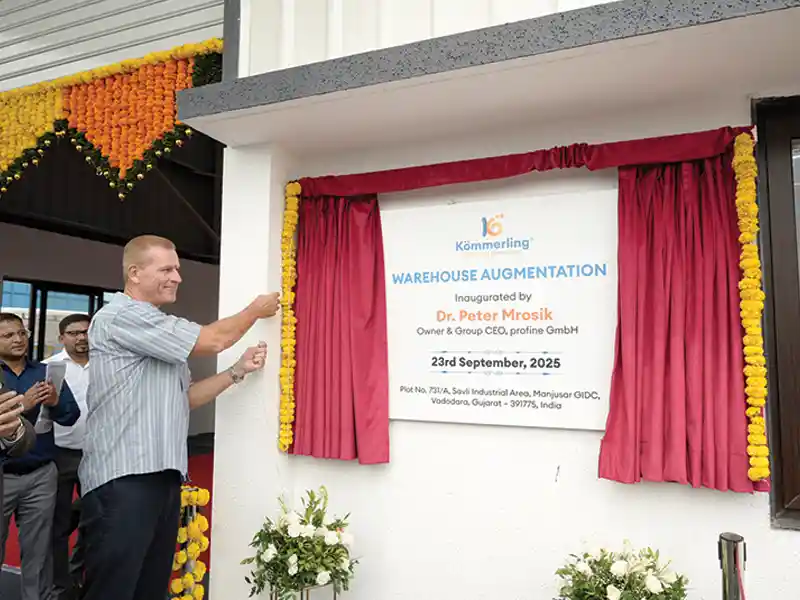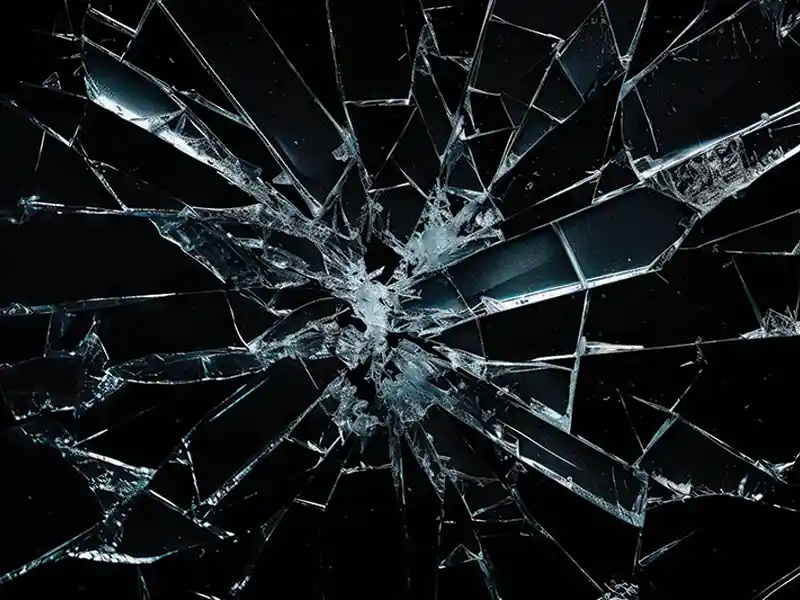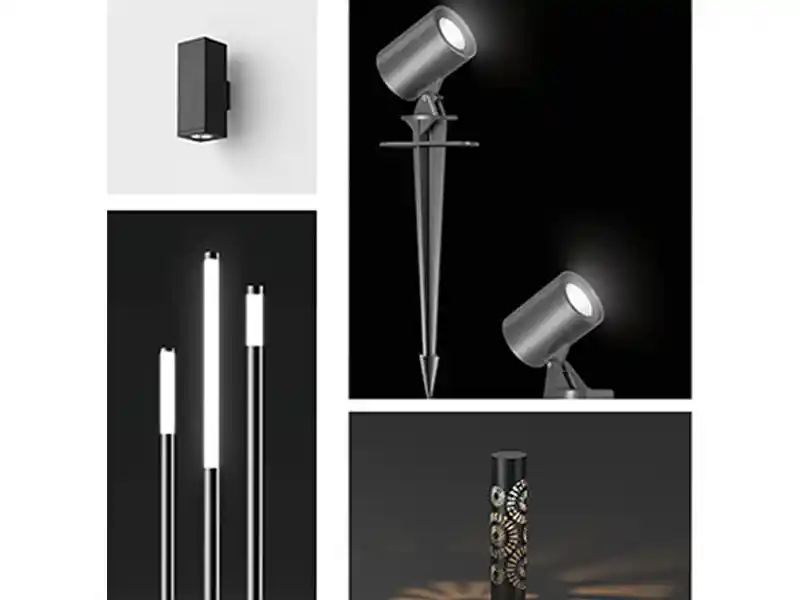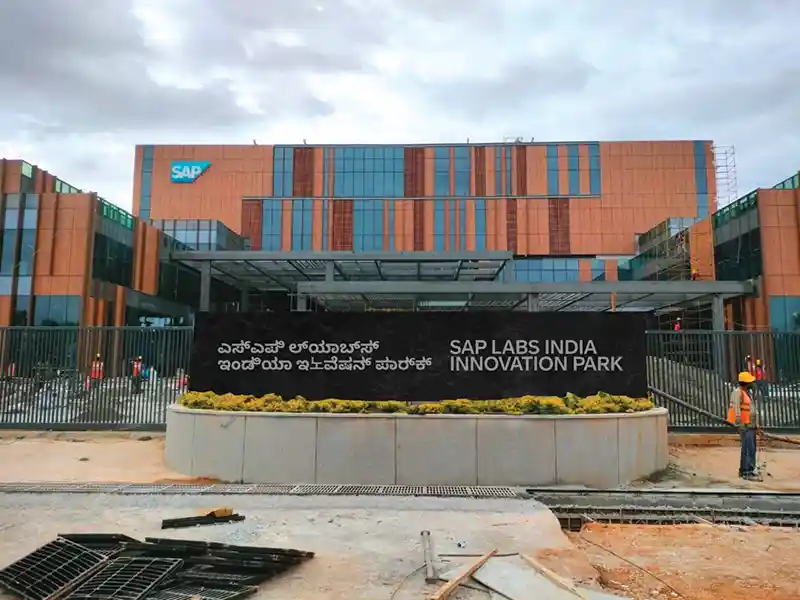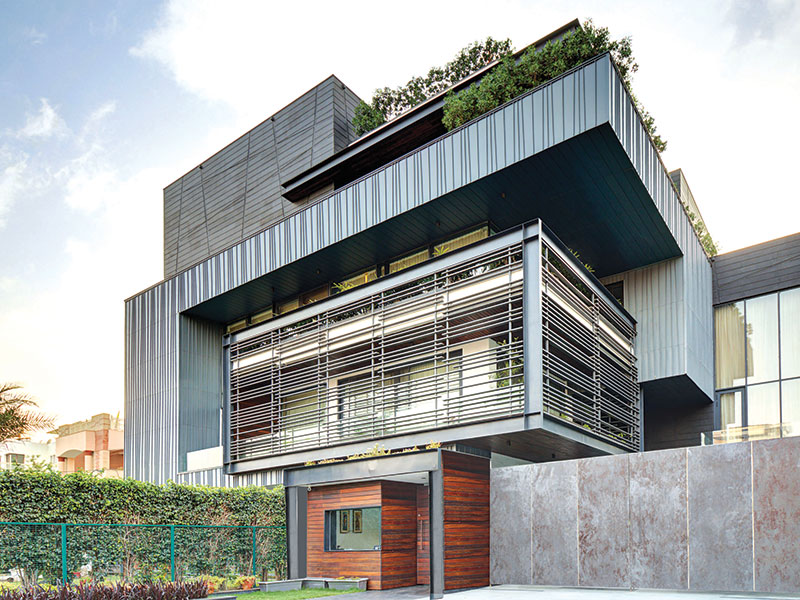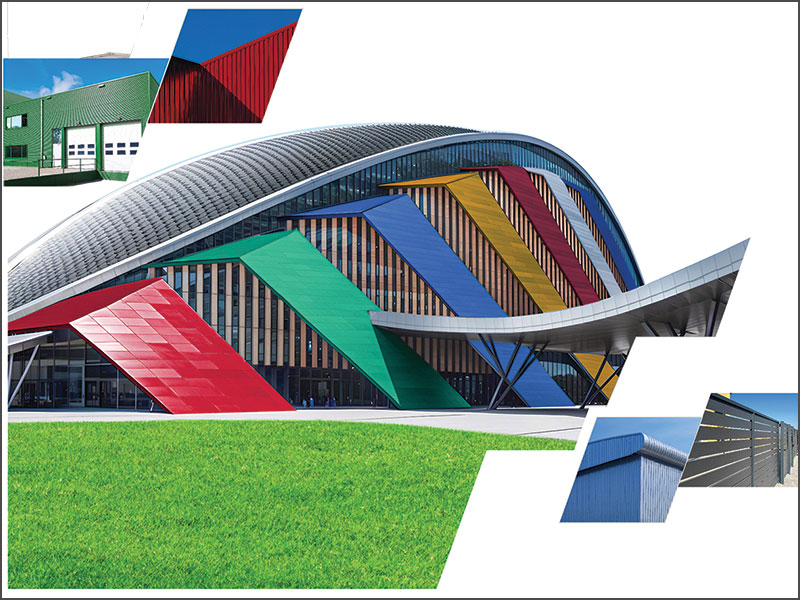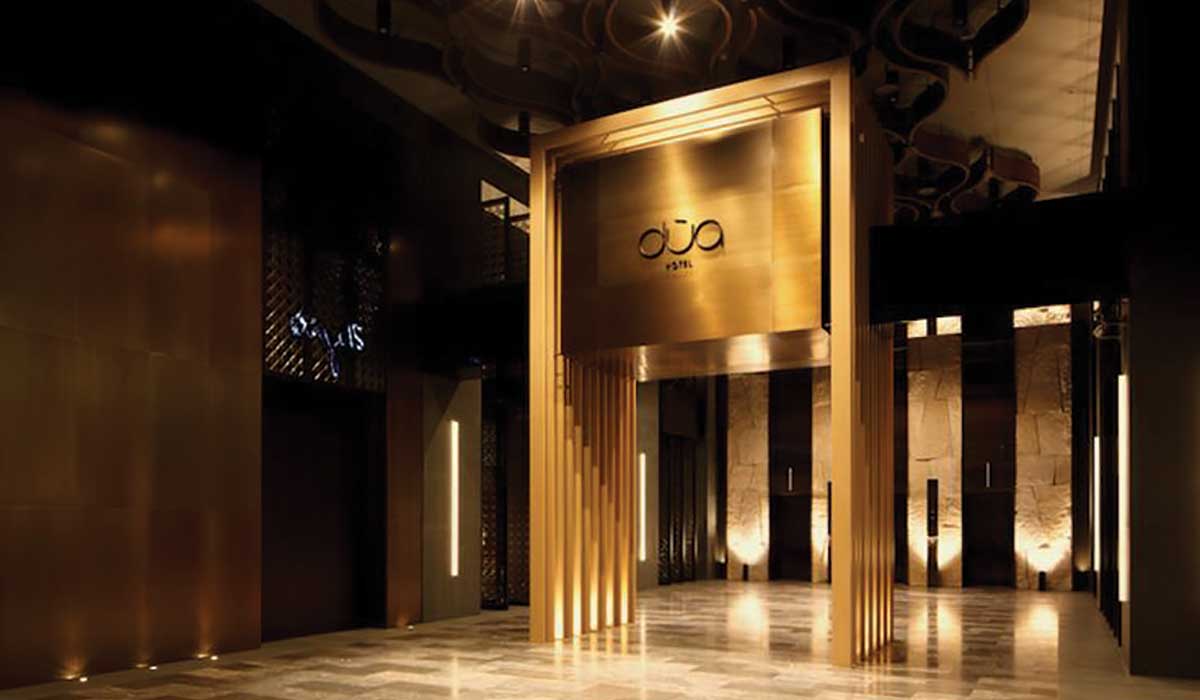
Elegant yet durable, beauty with strength, tough but still easy to fabricate, and low maintenance cost are some of the attributes that define stainless steel, making it an ideal material for enhancing the elevation of new-age buildings and infrastructure.
Steel’s corrosion resistance character (stain-less / stain-free) is particularly considered as the reason for its selection as a façade material by designers, fabricators, and architects. Within the family of stainless steel there is a wide variety of options available from low to very high corrosion resistance, raw (1D) to glossy (No.8) surface finishes.
In the last decade or so, India has seen a big change from age-old heritage monuments and English-era buildings to world-class cities, public utility junctions like metro rails, railway stations, bridges, exhibition centers, conference halls, to temples and monuments, etc. The shift from Incredible India to a Vibrant India has increased the use of stainless steel, particularly the special finishes of advanced metallurgical grades.
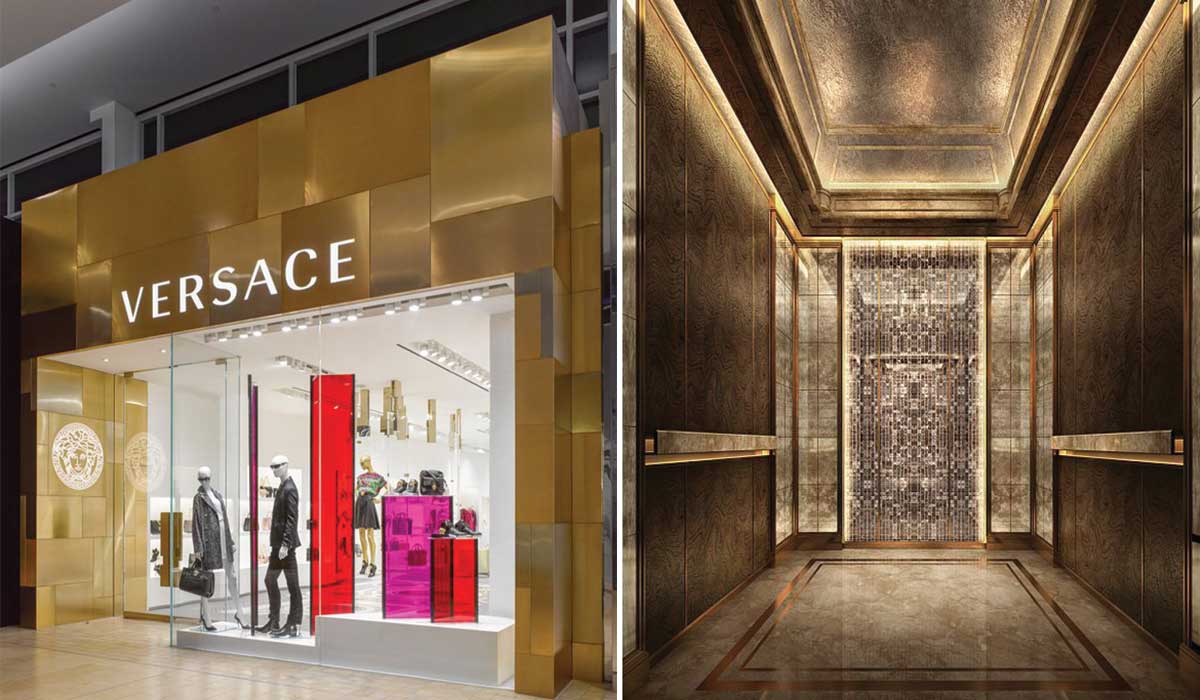
The attributes of stainless steel also include its higher strength to weight ratio; hygienic, easy to clean; low maintenance; 100% recyclable; environmentally friendly, and a material that improves the life-cycle cost of a building. In the modern era, choice of material is being influenced by environmental and economic pressures, unlike in the past. The growing business opportunities and the higher income age group of Y-Generation experiencing improved living standards, has raised the bar for long-lasting and lower maintenance construction material like stainless steel.
For the Architecture, Building and Construction Applications, Minox adds value to stainless steel by offering a variety of surface finishes like matte, satin, hairline, vibration, mirror, and vibrant colors like gold, champagne, rose gold, bronze, black, and many more.
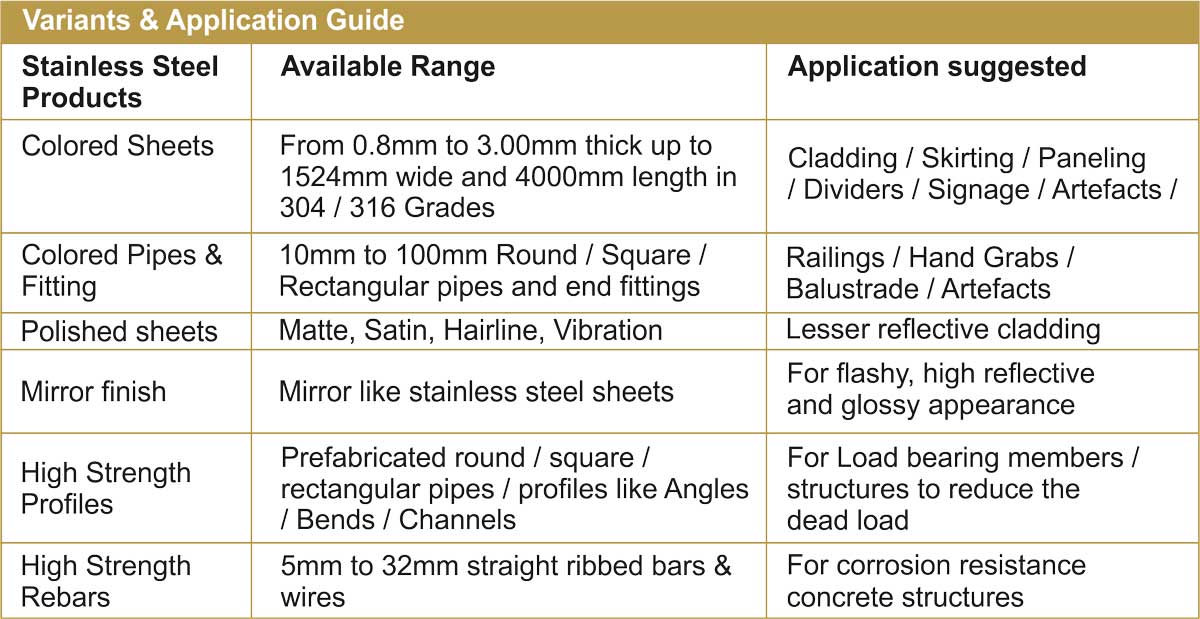
Stainless steel’s corrosion resistance is derived from a thin passive layer (invisible and insoluble layer of chromium, iron oxides, and hydroxides). When stainless steel is considered for use, the generic way to rank the material grade is according to its Pitting Corrosion Resistance (PRE). Though there are various formulas available, the formula below is widely used to check the PRE number:
PRE = % Cr + 3.3 % Mo + 16 % N.
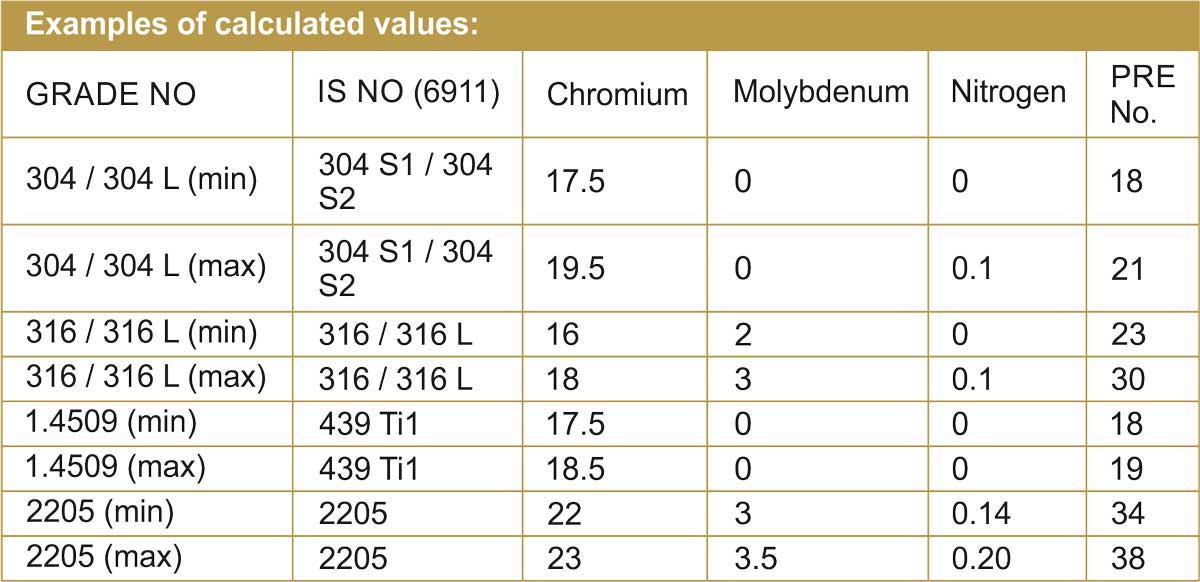
When stainless steel is considered as a construction material it is important to choose the right grade and finish for the right application. Stainless steel’s corrosion resistance is determined on the basis of its exposure. In Marine, Coastal, and Industrial environments chloride ingress and carbon dioxide affect the passive layer of chromium on the surface level, which leads to pitting corrosion later.
Surface finishes for stainless steel sheets (coils or strips) and plates, are specified as BS EN 10088-2:2005. The standard identifies both ‘ex-mill’ hot and cold rolled finishes and ‘special finishes’, as value added finishes to achieve specific aesthetic effects.
Most of the finishes available have a surface that provides a high standard of corrosion resistance, up to the limit of the compositional potential of the grade. The coarser finishes may limit the corrosion resistance of the steel in severe applications, where the grade is operating in conditions close to the limit of its corrosion resistance. In numeric or quantitative terms this is very difficult to define and is often a matter of judgment.
BS EN 10088-2 surface finishes
Table 6 of BS EN 10088-2 defines finishes for both (1) Ex-mill Hot Rolled Finishes (2) Ex-mill Cold Rolled Finishes and ‘Special Finishes’. The definitions of surface finish do not attempt to express surface finish in terms of the surface topography achieved in terms of Ra values.
To precisely define a ‘special finish’ for a particular application where a specific aesthetic texture or appearance is required usually involves close consultation with specialist finishers, as surface characteristics can vary. Once the grade of finishing grit has been defined, the final acceptance of special finishes is often done by using reference (swatch) samples.
The table gives an indication of how different surface finish specifying systems define similar finishes in relation to BS EN 10088-2.
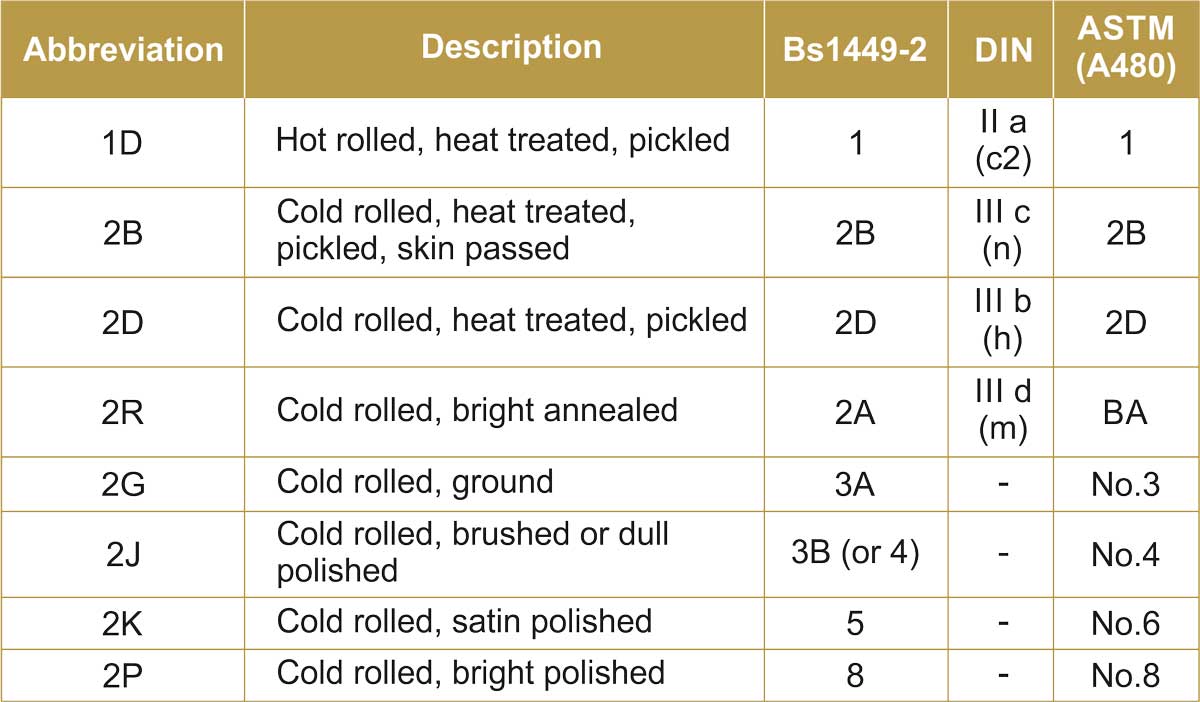
The special finishes are produced in different process methods like Embossed, Patterned, and Etched. As the number of operations adds on for each special requirement, the tolerance / acceptable level for the highly demanding surfaces finishes must be relaxed and not like the base finishes 2B, BA, No.4, No.8.
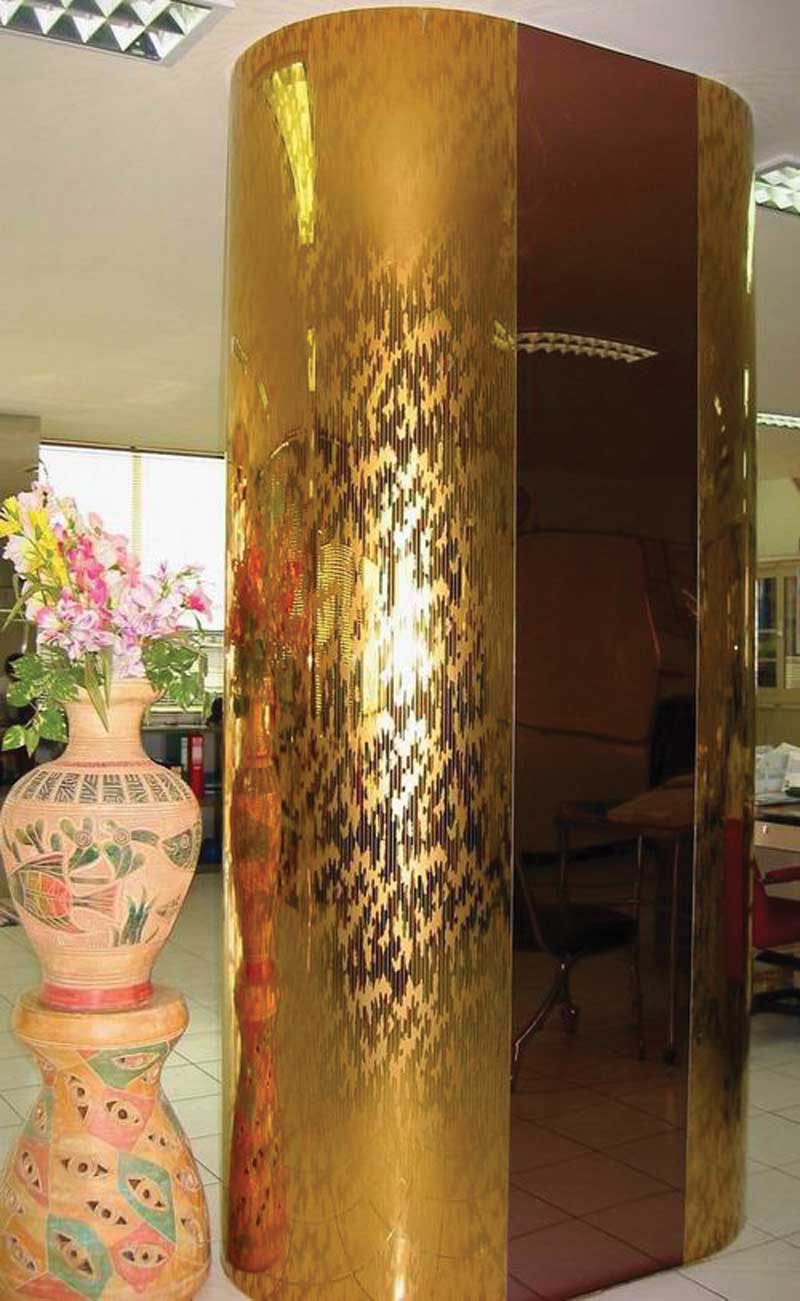
There are various types of protective Adhesive Tapes (PVC) available in the market. But all of them have a limited service life. Although, the protective film provides excellent safety to the material during transit, storage, production, and installation, due to ultraviolent rays, heat, or physical damage, they deteriorate and become difficult to remove.
The fabricator, installation and commissioning teams must know how to remove the Adhesive Coating as soon as they complete the process.
Cement splash / mortar: Generally, when the cement / plastering material is fresh, it is easier to remove, but when they settle on the stainless steel, it is more difficult. Using phosphoric acid, the plaster can be removed.
Contamination leads to pit marks: When local breakdown of the passive layer occurs, pitting and crevice corrosion happens. In stainless steel, during fabrication like cutting, bending, drawing, and welding, there is ample opportunity for contamination. It is important to remove the small ones immediately using nylon pads or stainless steel brushes as later on it becomes difficult and needs specialized chemicals like phosphoric acid to clean.
Different surface finishes require different cleaning: In stainless steel there are different surface finishes and depend on the end application demand. For example, interiors and household articles need a shinier finish, whereas, for industrial and outdoor applications, the steel must be corrosion resistant and meet the required purpose.
Industrial and Outdoor application: Periodic cleaning by removing the contamination and keeping the surface dust-free. Particularly in the marine, coastal, and industrial locations, the air borne chloride / contamination may settle on the surface and if there is no periodic cleaning, then the stainless steel might be at risk for corrosion.
Interior / Household application: Generally, stainless steel is used for interiors and household applications in improved surface finishes like brushed, polished, hairline, mirror, etc in various colors. These finishes may have fingerprint and other marks in the initial use, but with a few washes, visibility of the marks will fade away.
In conclusion, stainless steel is a self-maintained material in most applications, but to maintain its aesthetics and to prevent atmospheric corrosion, regular cleaning and maintenance are a must, because this material is Stainless but not Stainfree.
Cleaning must be done periodically, and before the visible contamination starts building up, to minimize cost and effort. In outdoor applications, contamination is severe as stainless steel is exposed to air borne particles that settle on the exposed surface and later lead to discoloration, or staining, pitting, and corrosion. Depending upon the location, the frequency of cleaning must be designed and followed stringently to get a better service life of any stainless steel applciation.
About the Author

Purushothama Reddy

